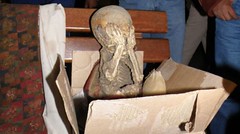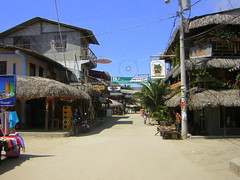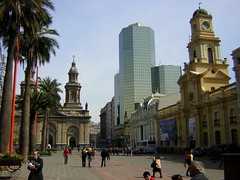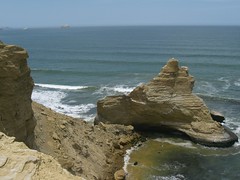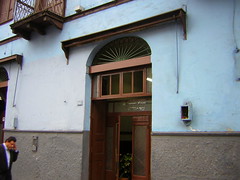Machu Picchu, the nature reserve
The platystele oxiglossa at just three centimetres tall with a flower of only two millimetres and the great Tahua Tahua that reaches five metres tall with a flower of eight centimetres are just two of 400 species of orchids growing in the sanctuary of Machu Picchu.

Matt Riggott: "Machu Picchu is surrounded by these beautiful pink orchids. I can't believe I saw my first wild orchid thousands of metres up by an old Inca city. I must have looked slightly crazy hanging off a mountain trying to peer at the flowers!"
Its more than 32,000 hectares are home to 423 types of birds, 352 kinds of butterflies, 41 species of mammals and 13 species of river creature that are protected by the National Institute of Natural Resources (INRENA). To see them you simply need to travel along the Inca trail, which is offers the best access to the biological reserve.
Since the 70s, a group of biologists from the National Institute of Culture (INC) have recovered and studied some 300 of about 400 species of native orchids. The exotic Wakanki, the day-flower and the Ñusta are just some of varieties that can be found in the 1610 square meters of botanical garden, located on the platform of the second of the three Inca platforms found in the area that borders Vilcanota River.
The centre was born in order to preserve the plants representative of the Machu Picchu area and to build a seed bank. The seeds and samples have been collected from the dozens of different micro climates found in the area and planted in conditions similar to those of their habitats.
“Following the findings, the seeds are arranged in the garden, according to its type. There are plants that grow among the rocks; epiphytes, living on trees and land,” explains Julio Ochoa.
From Aguas Calientes, about 25 minutes on foot along the access road to the ruins and to the bridge and through a marked trail, are the botanical garden and museum.
Travel along the Inca trail allows visitors to find the well known tunki, regarded as one of Peru’s national birds. Similarly, the royal churrete, only found in this region 3,600 meters above sea level can be see around Torontoy.
During the months of June-July, Spectacled Bears also visit the area, and are often seen by researchers from the INC and INRENA who conduct daily patrols to find and study new species.
These are just some of the best known species in the area, giving the site known more for its ruins another reason to be visited; as a home of biodiversity.
Tags: biodiversity, INC, INRENA, machu picchu, Nature, orchids, spectacled bear, wildlife



